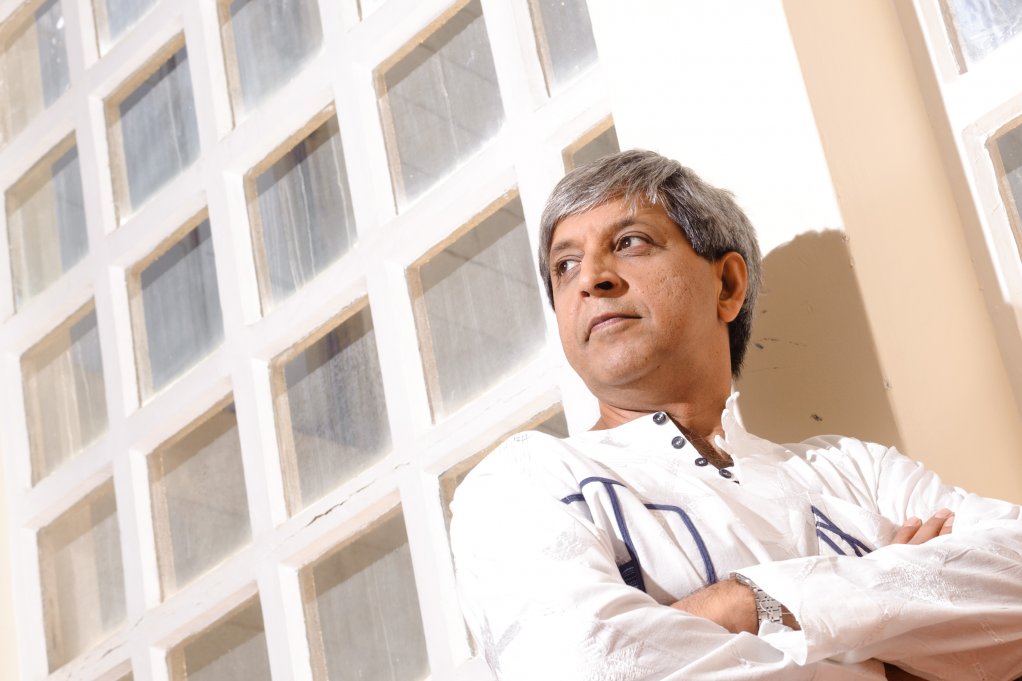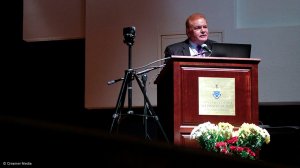JOHANNESBURG (miningweekly.com) – Gold Fields CEO Nick Holland believes it is time for current gold mining operations to “fundamentally transform” into “mines of the future" in order to prosper.
Speaking at the University of the Witwatersrand’s (Wits’) School of Mining Engineering’s celebration of 120 years of service, on Thursday, he pointed out that, while gold mining remains relevant and valuable, its structure has evolved to the extent that, to remain sustainable moving forward, the gold mines of the future have to be set up, structured and managed differently than the current approach dictates.
Operating practices and technology, talent and leadership, partnerships with key stakeholders and industry partners and governance will play key roles in the development of these mines of the future over the next few years.
“The future of our industry – the way we have mined over the last 100 years is not the way we will mine over the next 100 years,” he told attendees at the Wits celebration event.
Delivering the keynote address at the Wits Great Hall, Holland said: “The reason we are doing things differently – it is really very simple – is to survive.”
A number of significant headwinds had battered the gold industry in recent times, including the need to dig deeper amid declining grades, nearly doubling the period of development from 10 years to 18 years from the time of discovery to first production, and resulting in cost inflation.
Exacerbating this is growing demand by both governments and communities for greater benefits. There has been a 20% a year hike in the number of incidents of clashes with local communities between 2002 and 2015.
Optimising existing technologies and introducing new technologies will provide the solutions to current industry challenges and open the next 120 years of mining to enhanced digital mining, advanced analytics and new software technologies; a conversion of conventional mining practices to mechanisation and automation; improved economics of low-grade and residual orebodies; and enhanced energy and water efficiencies.
These trends will see rapid development over the next five years, Holland noted, citing, as an example, the development of a “remote mine” pilot in Australia over the next few years.
Gold Fields planned to establish a remotely-operated mine, with the mine’s drill rigs, trucks and loaders, besides others, all operated remotely.
“This is a prototype we are thinking of putting in place so we can learn,” he pointed out.
While Gold Fields’ mines in Australia have been deploying new technologies with a significant impact on costs, productivities and safety, the company is pioneering bulk, deep-level, mechanised gold mining on a significant scale in South Africa at its South Deep mine.
“The skills of operating and optimising of equipment do not come easy in a mining culture that has been overwhelmingly conventional mining. But we are making gradual progress in setting the base for what could well be the country’s last major gold mine,” he noted.
Looking to the mine of the future, Holland said the evolving workplace complement will include automated machinery specialists and information technologists, handling real-time, mine-wide information, as well providing skills development for local community members.
“Without a doubt, the mine of the future will have a high level skills set that will lead to a smaller overall workforce.
“We need to find a new model for community engagement where we train some community members for the new mine, but where we also encourage development of the local economy, so it is not reliant on jobs or services from mining alone,” Holland added.
The mining CEO of the future will also change from the current role of managing assets.
“Tomorrow’s leaders will be strategists, focusing on coaching and mentoring, integrated stakeholder management, collaborative decision-making and managing a portfolio of mines.”
“Technology has to be at the core of fundamental mining change in 2017. The way we mine has to change – we cannot mine in 2017 the way we mined in the 1800s or 1900s,” said Wits Vice-Chancellor and Principal Professor Adam Habib.
“We are researching cutting-edge deep-level mining techniques, developing new methods and systems to ensure the safety and wellbeing of miners, researching new technologies in mechanised mining systems and working to ensure the sustainability and future of the mining industry so that it is beneficial for all,” he added.
Holland pointed out that Gold Fields has trained and financed thousands of Wits students and has funded and sponsored a number of projects at Wits, including the Engineering Library, over many years.
Overall, Wits School of Mining Engineering boasted 633 undergraduates and 151 postgraduate students in 2017, with female students accounting for 35% and international students, mostly from other African countries, accounting for 15%.
“In line with Wits University’s Vision 2022 strategy, which focuses on making Wits a research-intensive university, the school has boosted its postgraduate numbers to create a growing pool of mining engineering researchers tackling both fundamental and applied research.
“The school graduated seven doctoral students in 2015 and another five last year,” said Wits School of Mining Engineering head Professor Cuthbert Musingwini.
Edited by: Creamer Media Reporter
EMAIL THIS ARTICLE SAVE THIS ARTICLE
ARTICLE ENQUIRY
To subscribe email subscriptions@creamermedia.co.za or click here
To advertise email advertising@creamermedia.co.za or click here














